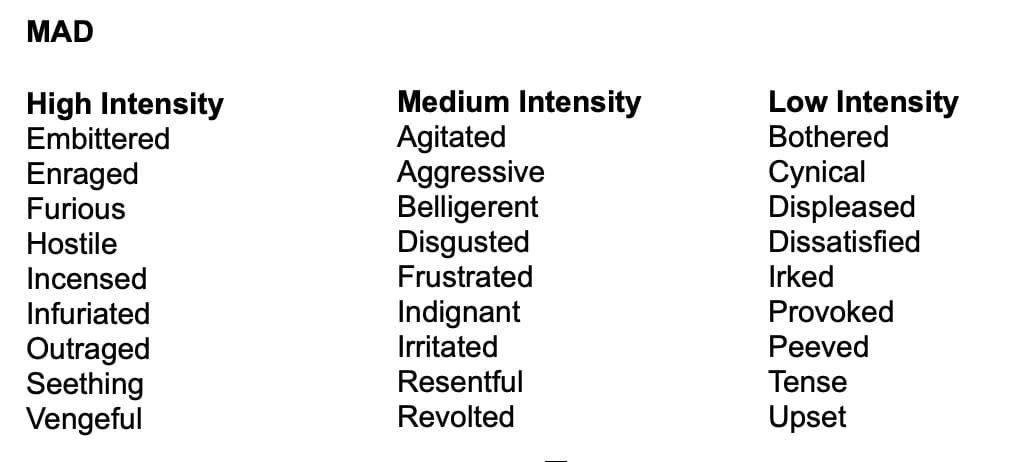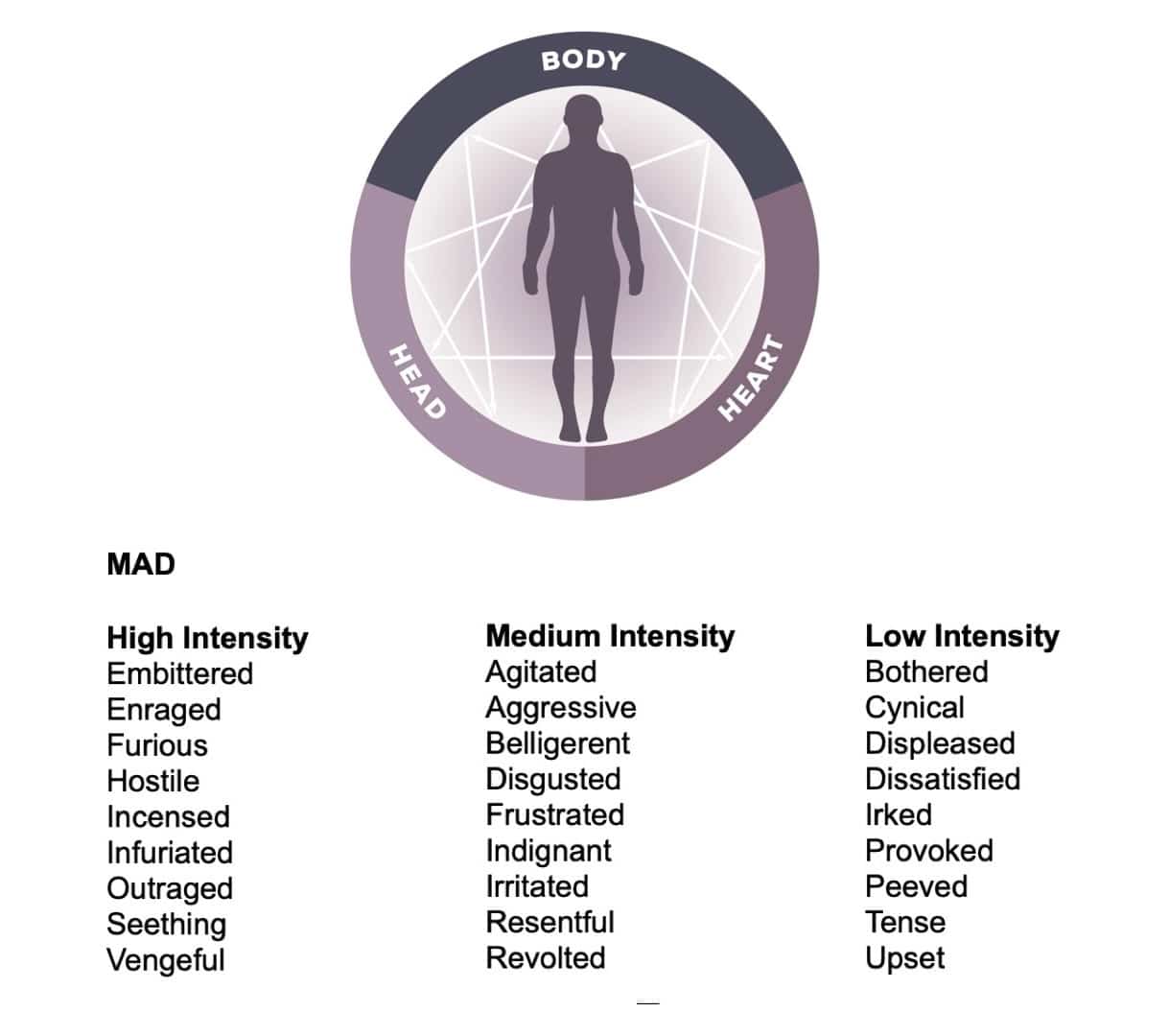“Who among us can look back at our lives and not recall an instance of being so swept up by anger that we said or did something we now deeply regret?” Sharon Salzberg

In our emotional repertoire, we have high intensity anger and medium and low intensity anger which I see as anger’s children.
Given your emotional repertoire, you have different levels of comfort with anger and her children. Source: Ginger Lapid Bogda, PhD
to Enneagram Types 8/9/1 are Body Types and reside in the ANGER triad.
In this Center, anger is quick, instinctive and rises from deep in the body.
Types 8/9/1’s energy is gathered in the BODY or GUT center. This serves the universal human need to for AGENCY.
This translates in a tendency to hold ground in order to feel as if they have power and control.
Anger is a protective emotion and feels less vulnerable than sadness or fear. Given that anger is a messenger saying something needs to be protected, I must assert control either in myself or the world around me.
- If I’m a 9, I exert control by numbing and minimizing my feelings. I’ts no big deal! (Until it is).
I often don’t know I am doing it when I’m doing it.
- If I’m an 8, I tend to exert control by externalizing anger. I make contact with the outside world by blaming someone or taking action. I tend to be in denial about its presence, its impact and my own vulnerability.
- If I’m a 1, I tend to exert control by containing and getting hold of the FEELINGS of anger by converting my anger to moral correctness, restraint or hyper politeness.
We’re often afraid of anger because it’s a powerful, unpredictable force in ourselves and others.
We may be afraid we’re going to hurt ourselves or others. We may associate it with harm as we’ve seen its destructivenes whether through yelling, violence or manipulation.
We may avoid it entirely and suppress it. It’s pushed to shadow and erupts surprisingly.
That being said, all of us get angry.
If you’re a Body type or a therapist or coach working with Body Types, especially Type 1 and Type 9, they may be uncomfortable acknowledging they’re angry. I like to show them the above chart with “anger’s children.”
So imagine working with someone who has an instinctual judgment about things and many strong, undigested feelings in the body. there is an interior grogginess of heaviness of past events that won’t be moved with a lot of words.
The perceptual center is the buried function, but you can’t force a Body type to see shift perspective by giving advice. They have a “dug in” view of things and they are sensitive to being pushed or told what to do or how to feel. It elicits defensiveness.
With Body Center people, you have an opportunity to practice your own inner sturdiness and sense of presence. It really matters in working with this Center.
So it is less about what you say and more about your presence and willingness to hang in when things get hard. I can’t emphasize strongly enough that under the tough, dug in exterior, is a tenderness, sadness and a hurt they may not have allowed themselves to feel.
Often, there are a lot of unprocessed, undigested feelings for people in this triad.
In our Body Center Master Class, we dive into anger. We make the distinction between Emotion, Feeling and Sentiment and we explore the innate intelligence of the body.
We offer you or your client an overview, reflection questions, meditations, a panel of Body Center people explaining their inner experience of defensiveness, anger and control.
We have recently added a new bonus video with a panel of highly self aware 8s, 9s and 1s.

